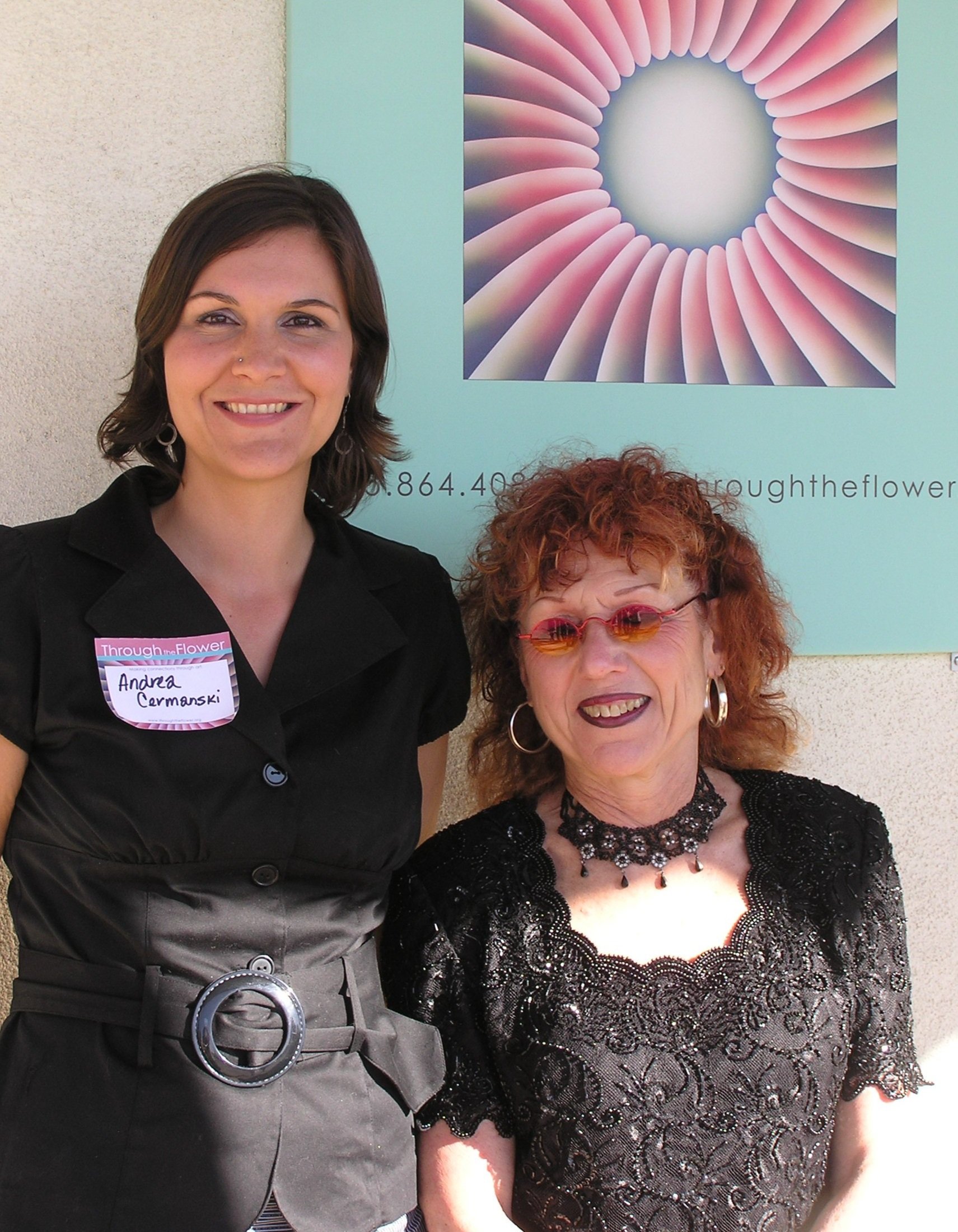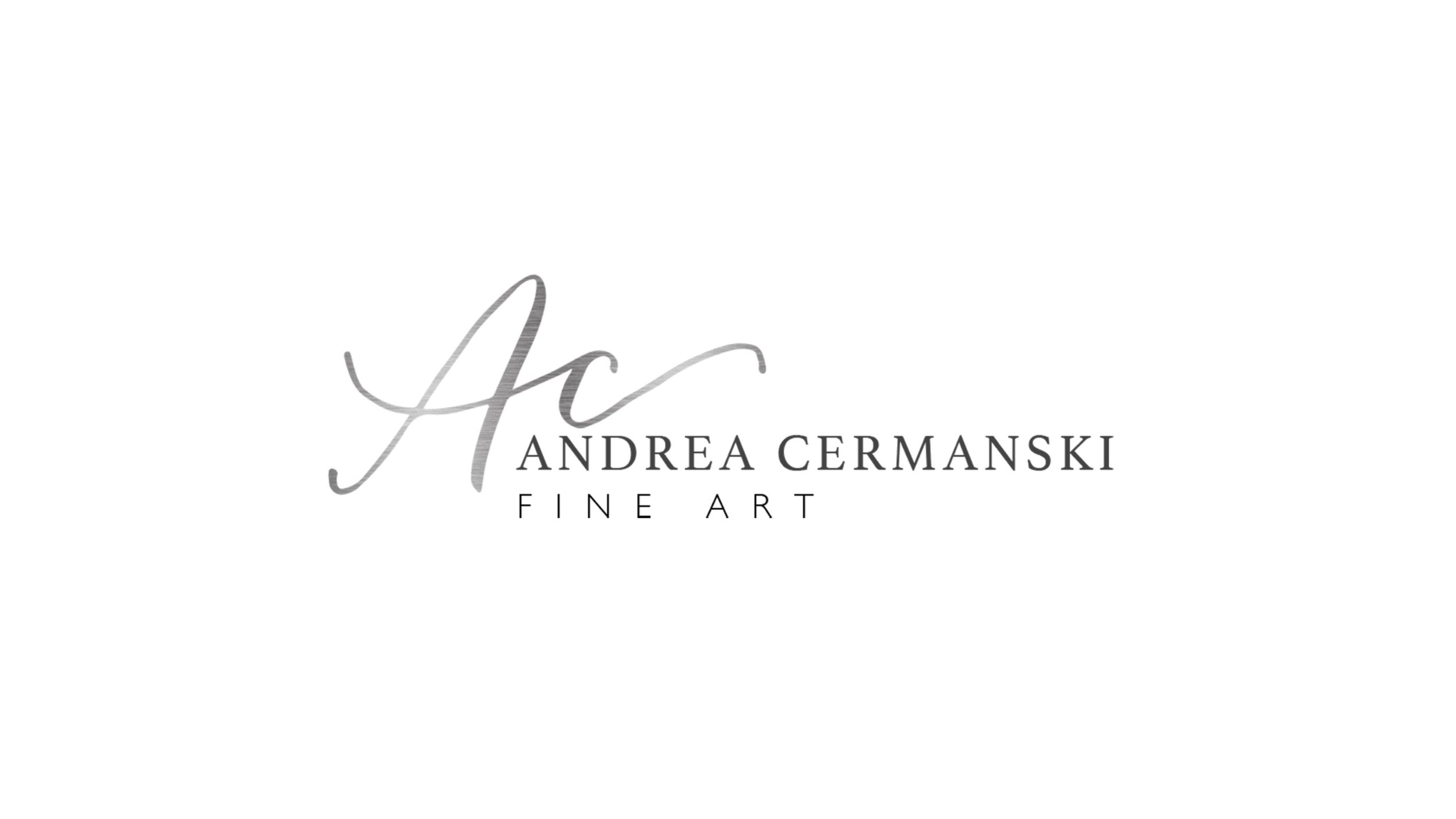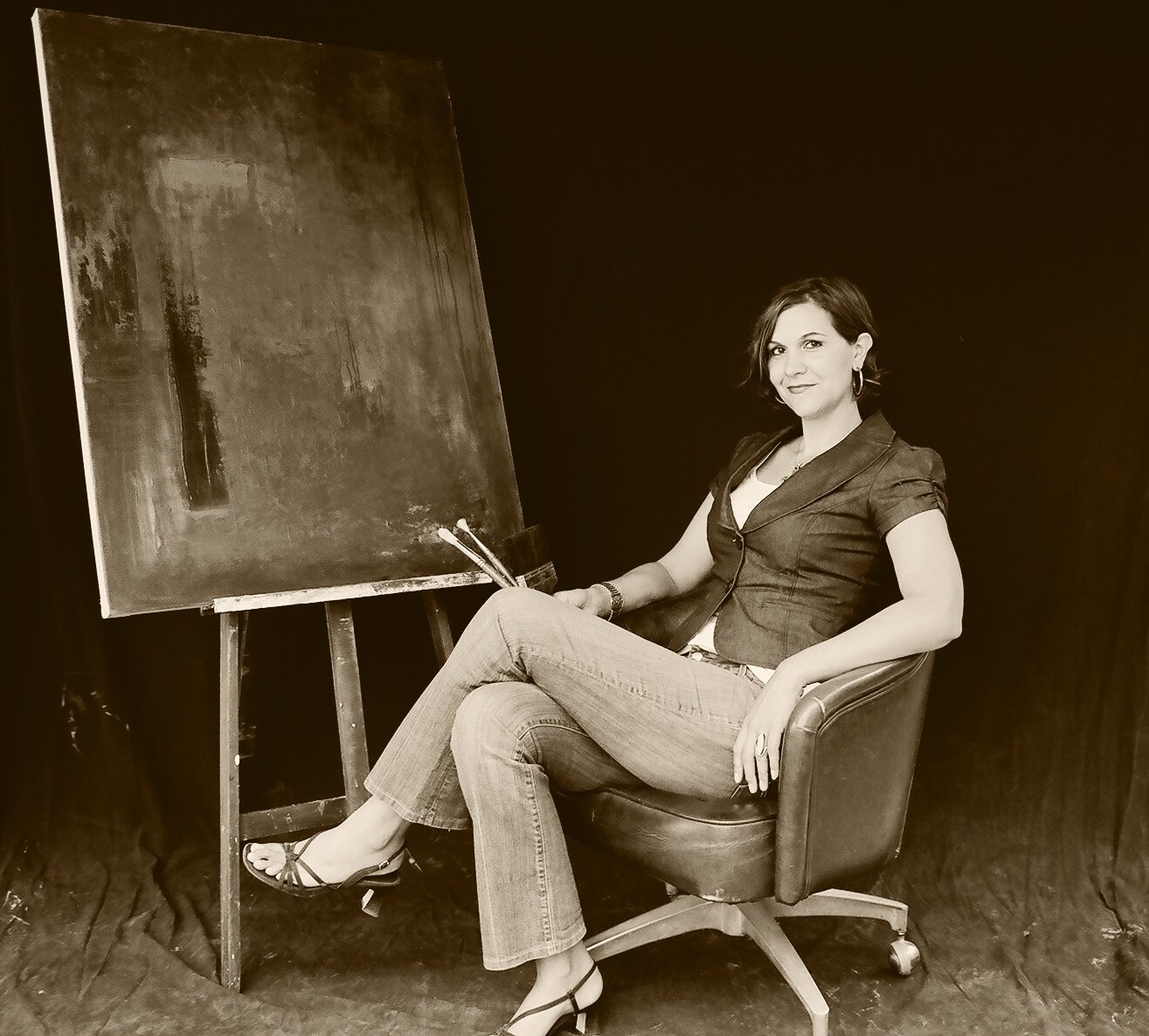Tips for Becoming a Professional Artist
Are you an artist who feels the need to make the leap and go pro? I get it! About ten years ago, I was there. However, I am happy to say that since then, a lot has happened. I have had four different galleries represent my work, managed to find myself in a show curated by Judy Chicago, and received the opportunity to exhibit my work in multiple groups shows, while even having a page dedicated to me in the book Contemporary Art of the Southwest (2014). I have also acquired collectors around the country, some of whom have multiple pieces of mine.
My advice comes from personal experience, but I recommend seeking advice from several different professional artists before making the move.

Andrea Cermanski with Judy Chicago at Feminists Under Forty, a show she curated one of my pieces into in Belen, NM.
Overview
When making the leap to the professional artist world, you will need to adhere to a few important steps. Some things you might want to consider are having your artwork professionally photographed or creating and maintaining a website. With that, you should have an artist statement, biography, and digital portfolio, as your social media presence will be important during this process. Additionally, you need to learn about pricing and framing art, as well as business/marketing skills. I will go over each of these in more detail below.
Is Your Work Ready?
Let’s first address whether it’s the right time to go professional. When going pro, you should feel like your work has improved substantially over the months/years. You should feel confident that your work is ready to be shown to the outside world. Additionally, make sure you have at least one complete series. Generally speaking, a series of paintings is usually comprised of multiple artworks that share thematic or aesthetic qualities. Validation from others – especially those willing to purchase one of your pieces – can confirm that you’re ready.
Studio Time vs. Marketing/Business Time
For obvious reasons, moving from amateur to professional will require a much higher level of dedication in terms of both the artist’s craft and time spent in the studio. Be sure you are using quality paints, varnishing your work for UV protection, and deciding whether you want to frame your pieces or not.
The next step is to educate yourself about marketing within the art business. This more often than not tends to be the least fun for artists (it was for me, anyway). You have the choice to hire out if you are ready to really invest. At minimum, you should stay educated about artist rights and contracts, as well as ways to self-promote your work. Consider hiring an art coach, an art representative, or taking art business courses (in your community or online).
List of Steps to Move from Amateur to Pro
Once you know the time is right, here are the steps you need to take when officially entering the professional artist zone:
*Optional* Evaluate possibly getting a professional logo so that you can better develop a visual brand. A logo conveys to the world that you are seasoned and serious about your work. I got mine (you can see below) from Fivvr and I am pleased to say I have been very happy with it. Alternatively, you could hire a designer or a digital art student from a local college to make a logo that best suits you.

Logo, I got from Fivver. It was about $150.
Steps to Become a Professional Artist
It’s Time to Get Started: Putting Your Portfolio Together
-
Have at least 1-2 completed series of paintings.
-
Write your biography and artist statement, while also writing a CV if you have a history of showings (even informal ones at coffee shops, university, etc.). Let a trusted friend review and edit your written work!
-
Create a digital portfolio. Starting with a little over 10 pieces is great, although I do suggest not going over 20 pieces.
-
Put forth only your best artworks on your website or social media platforms.
Let the Search Begin: Finding a Place to Put Your Art
-
Find time to research galleries that you feel can be a good fit for your work. For example, if the gallery only shows realistic landscapes and you do colorful abstracts, it would probably be best to skip that gallery. Seek cities where you want to show your art, especially ones with a strong art market. It fluctuates each year, but strong art markets are typically found in cities like New York, Los Angeles, Miami, Scottsdale, Santa Fe and others.
-
Reach out to galleries with a brief email, copy of your digital portfolio, CV and artist statement. You can also send a price list if you wish, though some artists wait until the gallery shows interest to do this. Mention in the email that after reviewing the work they show in their gallery, you feel strongly your work would be a good fit. Galleries get hundreds of emails from artists everyday, so don’t be offended if you don’t hear back. Just keep pressing on, and know this step takes a lot of time and persistence!
Letting People Know About Your Art: Self-Promotion is Key!
- Work on your self-promotion and marketing plan. I recommend listening to marketing podcasts to educate yourself about how to self-promote effectively. If you intend on selling work on your own (not through a gallery), then do not skip this step! Your art may be stunning, but no one will know about it unless you find ways to get your work out there.
-
Consider hiring an artistic representative and/or artist coach. Having people who work directly in the arts can be extremely helpful for you and your business, especially in the beginning when there is a lot to learn.
-
Look for Calls for Art online, on social media platforms, and at local arts organizations. Submitting your piece to a Call for Art usually costs money ($40 or so), but you should start to see this as a necessary investment in your business. After all, what you want is exposure, and Calls for Art could lead you to getting your work in a solo or group show.
-
If you manage to find a gallery to represent you, be sure to always be respectable and engaged. Show up to openings for other artists in your gallery and participate in events. This is always important, even more so when you are new and don’t have a lot of history of sales at the gallery.

Andrea Cermanski painting at a gallery event at the William and Joseph Gallery in Santa Fe.
Conclusion
Transitioning from an amateur to becoming a professional artist takes time and effort. Building a website, crafting an artist statement, and developing a portfolio can feel overwhelming, but don’t rush the process. Give yourself time, stay patient, and take small, consistent steps toward your goals.
You might also check out my blog post about setting SMART goals, as this could help you with specific goals that are measurable and therefore, more attainable!
If you’re looking to define your artistic style and build a standout portfolio, join my FREE 3-Day Define Your Style Challenge! This challenge will help you refine your artistic voice, develop a cohesive body of work, and attract the right collectors. Sign up now and take the first step toward your professional art career!
ABOUT ANDREA CERMANSKI
I am an artist out of Santa Fe, New Mexico who has been painting for almost 30 years. I love to teach first-timers as well as experienced painters who need a creative reboot. My work has been displayed in several galleries around the country, and I have a Bachelor’s in Art History, a Master’s in Art Education, and had my work in a show juried by Judy Chicago. The idea of getting more people painting makes me light up as I want to inspire more people to express their creative selves and tap into a place of joy and calm.
WANT TO LEARN MORE?
- Subscribe and get one of the FREEBIES below!
- Ebook on How to Move From Representational Painting to Abstraction: 5 Transformative Art Lessons
- Take the Quiz: What Abstract Artist are you Destined to Be?
- Break Free and Breathe: Type-A Guide to Artistic Play. Powerful exercises to loosen you up to create better abstracts.
- Check out My Online Abstract Painting Course
- Read More Painting Tips Blog Posts
- Check out My Paintings & Art Prints for Sale
- Follow Me On YouTube, Instagram, or Pinterest
